A well-designed off-grid system will have solar panels that effectively charge the batteries while supplying electricity to its electrical load. Now, what happens to the excess solar power (off-grid) when the batteries are full? In this case, the solar power will be curtailed and be limited to what the load only requires. Unfortunately, the extra energy from solar panels might not be converted into electricity and will be wasted most of the time.
This article will try to provide a more profound answer to this burning question with facts and information based on actual site scenarios. I will also present some ideas on how you can utilize the excess energy from your solar power system and avoid wasting it. So, let’s get into this!
What Happens To Excess Solar Power When Batteries Are Full?

So, what happens to solar power when batteries are full? This question assumes an off-grid solar power system that has batteries that are 100% charged. If the electricity production from the solar panels is MORE than the load (or the power requirement of your appliances), what will happen? In this case, the inverters or charge controllers will limit their power output to what is required by the load, thus, curtailing the maximum potential solar power. The system will not further convert the excess solar energy into electricity.
But, how do they do it?
Whenever the inverters/charge controllers sense that there is no need to produce more electricity from solar, it enables the “Active Power Curtailment” function. Let me give you a simple “water analogy” on this. The inverter acts like an active valve of a large water jar (a.k.a. solar power source) that senses the water level in the basin (a.k.a. your load) and regulates the water flow (power output) so as not to flood your house.
What Is Active Power Curtailment?
The active power curtailment pertains to the deliberate reduction of an inverter’s output power (in Watts) below what the solar panels could potentially supply. It actively calculates the voltage droop parameter of the system to know by how much it must reduce the inverter’s output power without causing overvoltages.
For example, a 10kW inverter can curtail its power output to 5kW whenever the load is only about ~5000 Watts and the batteries are fully charged. It allows the system to satisfy its load requirement without overvoltage at the feeder’s end.
PV inverters use active power curtailment to provide voltage management and control at the load side. When the load is low, and the solar power generation is high, overvoltage might occur at the consumer’s end.
Inverters limit or curtail their output power to match the load to mitigate any high voltage level issue. As a result, it will normalize the voltage on the feeder side of the power system.
Real-World Data Of An Off-Grid Solar System

To better understand what happens to excess solar power in off-grid systems, let me present to you some data taken from an existing and operational site. So, let’s have a look at it!
It is from a microgrid system with solar power, generators, battery storage, and without a connection to the public grid.
1-Day Graph Of An Off-Grid System

The graph above shows the 24-hour operation of a hybrid energy system starting from 12:00:16 AM up to the following midnight. The values are shown on the right-hand side to tell us the system’s latest status. It means these are the most recent power measurements, as seen on this graph.
| Power Sources | Time | Real Power (kW) |
| Generator | 12:06 AM | 718 |
| Solar Power | 12:06 AM | 0 |
| Energy Storage | 12:06 AM | -3 (Charging) |
| Load | 12:06 AM | 715 |
| Max Potential Solar Power | 12:06 AM | 0 |
Legend:
- The yellow line shows the real power coming from the diesel generators.
- Solar PV power is represented by the green line.
- The white line shows the charge/discharge power of the batteries.
- The load is shown with the red line.
- Lastly, the maximum available solar PV power is represented by the blue line.
This system will perfectly fit the description needed to answer the main question on a larger scale. It has a solar power capacity (2,000 kW) far above the load levels (1,300 kW).
In this system, the battery system is sized to do grid stabilization only and not purely for time-shifting purposes. So, the energy storage capacity (250kW/300kWh) is made less compared to other sources. This system uses generators during the night.
This hybrid system can still power the load with solar power alone between 8 AM to 4 PM, without the gensets. You will see it by taking a closer look at the graph below.
8-Hour Graph Of An Off-Grid System

| Power Sources | Time | Real Power (kW) |
| Generator | 4:16 PM | 0 |
| Solar Power | 4:16 PM | 933 |
| Energy Storage | 4:16 PM | 146 |
| Load | 4:16 PM | 1079 |
| Max Potential Solar Power | 4:16 PM | 950 |
When we look at our 8-hour graph for an off-grid system, we would somehow understand what happens to the excess solar energy. In this scenario, the generators are not running from 8 AM to 4 PM. As you can see, it has a value of 0 kW during these 8 hours.
Now, the blue line indicates the maximum potential solar power that the system can provide. Below the blue line are the lines showing the actual load (red), active solar power (green), and battery power (white).
What we can notice here is that solar power production follows the load requirement. Any minor adjustments are being taken care of by the battery system. The difference between the maximum potential solar power and the actual solar power determines the excess solar energy.
In this scenario, the solar power is being curtailed by the inverters since the load is so much lower. It is limited by how much power the load is drawing out from the system. Therefore, there is no need to draw more electricity from the solar modules.
How Do We Avoid Wasting Excess Solar Power?
When you have an oversupply of solar energy and there is not enough load to consume the electricity, you might end up wasting the excess solar power. So, what can you do with the extra power from solar panels? Here are some of the things that you can do to avoid this scenario.
1. Build Electric Vehicle Charging Stations
One solution to avoid wastage of solar energy is to put up more loads, specifically, electric vehicles. You can do it by adding charging stations in your home or your company’s parking area.
You can do it by allocating a dedicated outgoing breaker in your main switchgear. It will then power the circuit that connects to the EV charging stations.
With this, you will encourage more people to use EVs and help reduce carbon footprints. You can even replace your gasoline-hungry utility vehicles with battery-powered ones such as electricity-powered forklifts, cargo trucks, and others.
2. Install More Battery Banks
Another solution will be to add more battery banks. When you increase your energy storage capacity, it will bring more stability to your power system. Instead of wasting the excess solar energy, you will be able to fill more of your batteries for later use.
This way, you will be more confident in scaling up your business up and add more loads. Just make sure you manage your power consumption well to avoid any problems.
3. Donate Your Excess Solar Energy
Giving away your excess energy will always be a good idea if you have no use of it. Instead leaving it underutilized, you can set up a charging station where others can bring in their batteries and charge them for free off your excess power.
As it is written, ‘It is more blessed to give than to receive.’
But, to whom will you do this? Who are the possible recipients of the solar energy donation? You may think about campers, people with RVs, and others. Or, you could give it to foundations that help the less fortunate people and communities. They will surely benefit from this kind of generosity whenever they are near your power station.
How About The Excess Solar Power From On-Grid Battery Systems?
So, where does excess solar power go for on-grid systems? If the battery banks are allowed to connect to the grid, the system can send the extra solar energy into the public electrical network. However, you need to understand that each electric utility has its own rules and regulations to adhere to when exporting solar power into its system.
Some grid companies will impose net-metering, or feed-in tariffs, or even zero-export policies. Therefore, it is recommended that you get to know their power export regulations beforehand.
If they impose net-metering, you can send the excess solar energy to the common grid, and you will have an energy credit which you can use later during the night. When you generate more solar energy within the whole month, the utility could carry it over for the next monthly bill.
If the grid company imposes feed-in tariffs, you can earn some money based on how much you export and how much they buy your solar energy in $/kWh. It also means that they have control over the price of your extra solar energy. If they buy it at a high price, then it’s a win. However, some places impose very low pricing on exported solar energy, and it will not be that good for homeowners with huge solar power systems. Thus, it’s crucial to do your homework and know this information from your local power utility.
For zero-export policies, you will not benefit from your system’s excess solar power at all. The electric utility will usually require you to put a zero-export device on your inverters in this case. Therefore, it is in this scenario where you would waste your extra solar power.
Can Solar Panels Overcharge The Batteries?
In smaller systems with no electrical protection devices, solar panels can indeed overcharge their batteries. In some cases, people will connect the output wires of the solar modules directly to their battery terminals. The thing is, that solar panels alone have no means of understanding whether the batteries are full or not.
When the modules keep on pumping electricity to the batteries beyond their capacity, overcharging happens. It can severely damage your battery banks and could render them unusable in the aftermath.
That is why proper system design and protection devices are necessary. If you have a charge controller, it will easily solve this problem.
Final Thoughts: What Happens To Excess Solar Power In Off-Grid Systems?
Now, you have learned that when there is excess solar power, the off-grid system will not convert it into electricity but instead limit the inverter’s output to what is only required by the load. If you read the whole article, you will also know how you can utilize the extra solar power instead of wasting it.
When building a good quality off-grid solar power system, it is so vital that you calculate first your energy needs before sizing the batteries and solar panels. A proper system design helps you avoid two terrible scenarios: undersized and oversized systems, leading to unsatisfied load requirements and wastage of valuable resources.
The amount of energy you could utilize or potentially waste will depend on how well you prepare and implement the design of your system.
Super Human
If you want to learn more about the solar technology and other renewable energy sources, sign up to our email list now and be part of the Solar Powered Fam!



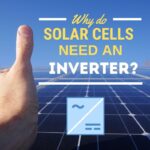
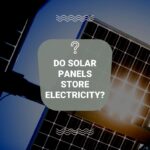

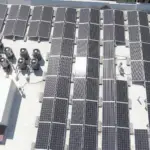



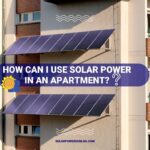



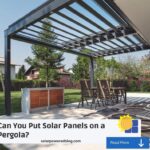

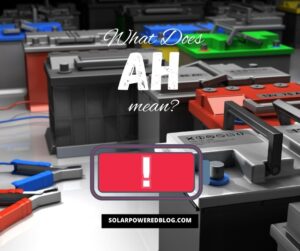


Mining bitcoin with the extra solar energy would be a smart option. You can easily turn the waste energy into $$$.
Yes, this is actually a brilliant idea! As what I know, bitcoin mining equipment are power hungry. Why not use the excess solar power for them, right?
Great article! Can I ask what manufacturer for generator, solar, and energy storage you are using, including the inverter(s) and software needed to make this work?
Hi Shivam! Thanks for dropping by. This is a Caterpillar microgrid system.